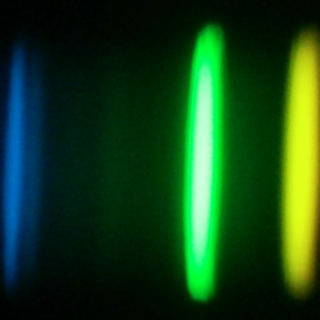Bibcode
Gilmore, G.; Randich, S.; Worley, C. C.; Hourihane, A.; Gonneau, A.; Sacco, G. G.; Lewis, J. R.; Magrini, L.; François, P.; Jeffries, R. D.; Koposov, S. E.; Bragaglia, A.; Alfaro, E. J.; Allende Prieto, C.; Blomme, R.; Korn, A. J.; Lanzafame, A. C.; Pancino, E.; Recio-Blanco, A.; Smiljanic, R.; Van Eck, S.; Zwitter, T.; Bensby, T.; Flaccomio, E.; Irwin, M. J.; Franciosini, E.; Morbidelli, L.; Damiani, F.; Bonito, R.; Friel, E. D.; Vink, J. S.; Prisinzano, L.; Abbas, U.; Hatzidimitriou, D.; Held, E. V.; Jordi, C.; Paunzen, E.; Spagna, A.; Jackson, R. J.; Maíz Apellániz, J.; Asplund, M.; Bonifacio, P.; Feltzing, S.; Binney, J.; Drew, J.; Ferguson, A. M. N.; Micela, G.; Negueruela, I.; Prusti, T.; Rix, H. -W.; Vallenari, A.; Bergemann, M.; Casey, A. R.; de Laverny, P.; Frasca, A.; Hill, V.; Lind, K.; Sbordone, L.; Sousa, S. G.; Adibekyan, V.; Caffau, E.; Daflon, S.; Feuillet, D. K.; Gebran, M.; Gonzalez Hernandez, J. I.; Guiglion, G.; Herrero, A.; Lobel, A.; Merle, T.; Mikolaitis, Š.; Montes, D.; Morel, T.; Ruchti, G.; Soubiran, C.; Tabernero, H. M.; Tautvaišienė, G.; Traven, G.; Valentini, M.; Van der Swaelmen, M.; Villanova, S.; Viscasillas Vázquez, C.; Bayo, A.; Biazzo, K.; Carraro, G.; Edvardsson, B.; Heiter, U.; Jofré, P.; Marconi, G.; Martayan, C.; Masseron, T.; Monaco, L.; Walton, N. A.; Zaggia, S.; Aguirre Børsen-Koch, V.; Alves, J.; Balaguer-Nunez, L.; Barklem, P. S.; Barrado, D.; Bellazzini, M.; Berlanas, S. R. et al.
Bibliographical reference
Astronomy and Astrophysics
Advertised on:
10
2022
Journal
Citations
138
Refereed citations
112
Description
Context. The Gaia-ESO Public Spectroscopic Survey is an ambitious project designed to obtain astrophysical parameters and elemental abundances for 100 000 stars, including large representative samples of the stellar populations in the Galaxy, and a well-defined sample of 60 (plus 20 archive) open clusters. We provide internally consistent results calibrated on benchmark stars and star clusters, extending across a very wide range of abundances and ages. This provides a legacy data set of intrinsic value, and equally a large wide-ranging dataset that is of value for the homogenisation of other and future stellar surveys and Gaia's astrophysical parameters.
Aims: This article provides an overview of the survey methodology, the scientific aims, and the implementation, including a description of the data processing for the GIRAFFE spectra. A companion paper introduces the survey results.
Methods: Gaia-ESO aspires to quantify both random and systematic contributions to measurement uncertainties. Thus, all available spectroscopic analysis techniques are utilised, each spectrum being analysed by up to several different analysis pipelines, with considerable effort being made to homogenise and calibrate the resulting parameters. We describe here the sequence of activities up to delivery of processed data products to the ESO Science Archive Facility for open use.
Results: The Gaia-ESO Survey obtained 202 000 spectra of 115 000 stars using 340 allocated VLT nights between December 2011 and January 2018 from GIRAFFE and UVES.
Conclusions: The full consistently reduced final data set of spectra was released through the ESO Science Archive Facility in late 2020, with the full astrophysical parameters sets following in 2022. A companion article reviews the survey implementation, scientific highlights, the open cluster survey, and data products.
Aims: This article provides an overview of the survey methodology, the scientific aims, and the implementation, including a description of the data processing for the GIRAFFE spectra. A companion paper introduces the survey results.
Methods: Gaia-ESO aspires to quantify both random and systematic contributions to measurement uncertainties. Thus, all available spectroscopic analysis techniques are utilised, each spectrum being analysed by up to several different analysis pipelines, with considerable effort being made to homogenise and calibrate the resulting parameters. We describe here the sequence of activities up to delivery of processed data products to the ESO Science Archive Facility for open use.
Results: The Gaia-ESO Survey obtained 202 000 spectra of 115 000 stars using 340 allocated VLT nights between December 2011 and January 2018 from GIRAFFE and UVES.
Conclusions: The full consistently reduced final data set of spectra was released through the ESO Science Archive Facility in late 2020, with the full astrophysical parameters sets following in 2022. A companion article reviews the survey implementation, scientific highlights, the open cluster survey, and data products.
Related projects

Physical properties and evolution of Massive Stars
This project aims at the searching, observation and analysis of massive stars in nearby galaxies to provide a solid empirical ground to understand their physical properties as a function of those key parameters that gobern their evolution (i.e. mass, spin, metallicity, mass loss, and binary interaction). Massive stars are central objects to
Sergio
Simón Díaz

Nucleosynthesis and molecular processes in the late stages of Stellar Evolution
Low- to intermediate-mass (M < 8 solar masses, Ms) stars represent the majority of stars in the Cosmos. They finish their lives on the Asymptotic Giant Branch (AGB) - just before they form planetary nebulae (PNe) - where they experience complex nucleosynthetic and molecular processes. AGB stars are important contributors to the enrichment of the
Domingo Aníbal
García Hernández

Observational Tests of the Processes of Nucleosynthesis in the Universe
Several spectroscopic analyses of stars with planets have recently been carried out. One of the most remarkable results is that planet-harbouring stars are on average more metal-rich than solar-type disc stars. Two main explanations have been suggested to link this metallicity excess with the presence of planets. The first of these, the “self
Garik
Israelian

Chemical Abundances in Stars
Stellar spectroscopy allows us to determine the properties and chemical compositions of stars. From this information for stars of different ages in the Milky Way, it is possible to reconstruct the chemical evolution of the Galaxy, as well as the origin of the elements heavier than boron, created mainly in stellar interiors. It is also possible to
Carlos
Allende Prieto